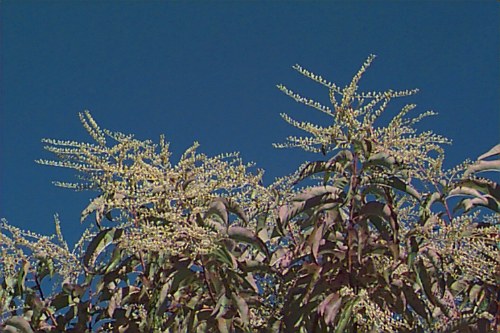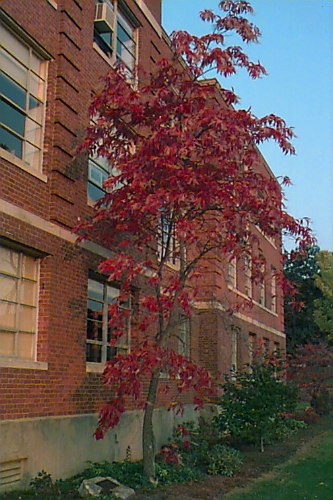Sourwood Tree Honey
- Valerie Just
- Jul 4, 2017
- 4 min read
My Sourwood Tree
My youngest son, Dan, is an Urban Forester in Washington, D.C. Last summer, he encouraged me to get a Sourwood tree for my back yard. The city of Washington has a lot of sourwood trees, and he stated that the bees just love the bloom. As a side note, the city also manages city honey bee hives - very impressive!! Dan is not involved in the management of the hives, but maybe I can convince him to volunteer!
Anyway, I started a search at local nurseries for Sourwood trees, and discovered that they are not carrying them - at least not at the time I started looking, which was August. I finally found a landscaper that could order me a Sourwood from Missouri. It's important to note that the plant zone starts at zone 5 for these trees - Des Moines' plant zone in recent years, due to climate change, went from zone 4 to zone 5. The nurseries are probably still catching up to the zone change.
I planted my new Sourwood in the only place that could support this size tree, with a full-sun requirement - out next to my bee hives! It survived the winter, thankfully, as I just read in a University of Kentucky article that young trees, when planted in zone 5, may not survive the first year of winter. I am blessed!
I am anxiously awaiting the tree to bloom - it blooms in July. It has a good start on buds - this is my husband, John, with our in-town hives. Note on the end of the Sourwood stem are the buds:
I have plans to buy another Sourwood tree, and plant it near my deck. I should probably get a jump-start on it now, so I don't have the same problems I did last year. I've also asked John to talk to Mike (our friend that let's us keep hives on his farm) to see if I can buy some really small trees (I paid $400 for the tree I planted last year!) and plant them on his property.
The Sourwood Tree
Resources:
The Arbor Day Foundation
The Department of Horticulture at the University of Kentucky
A medium-sized tree, the sourwood shines in the summer and fall. Its midsummer flowers appear like lilies-of-the-valley, are highly fragrant and contrast nicely against the green foliage. Then in the fall, leaves turn intensely beautiful shades of brilliant crimson, purplish-red and sometimes yellow. This tree shines in landscaping as a specimen in a lawn, a garden feature, an ornamental addition to larger trees or a clump in a large, open space.
Blooms from June to early July, with fragrant white flowers on drooping stalks that look very similar to lilies-of-the-valley.
Features simple, elliptic or oblong leaves that are dark green in color and range from 4–8" long.
Provides great fall color, with leaves turning crimson, purplish-red and sometimes yellow in the fall.
Can live 100–200 years if planted in the right site.
Yields an oval-shaped fruit that is under ½" in diameter.
Grows in an oval shape.
Is used by bees to produce highly prized honey.
History/Lore
A native tree of North America, the sourwood is one of the few endemic trees that is not found in other continents unless planted and has no related species. The name Sourwood is derived from the acrid taste of its leaves, but tea made from these leaves is widely used by mountain climbers as a thirst-quencher. Pioneers used the sap as one ingredient in a concoction used for treating fevers; the bark for chewing to soothe mouth pains; and leaf tea for treating diarrhea, indigestion and dysentery. But the best known by-product of the Sourwood tree is the hard-to-find and extremely delicious honey that bees produce from the fragrant blossoms.
It goes by many other common or local names including sorrel tree, sorrel gum, sour gum, arrow wood, elk tree, lily-of-the-valley tree and titi tree.
Soil Preferences
The sourwood grows in acidic, loamy, moist, sandy, well-drained and clay soils. It prefers normal moisture but has some drought tolerance.
Sun Preference
Full sun is the ideal condition for this tree, meaning it should get at least six hours of direct, unfiltered sunlight each day.
Growth Rate
This tree grows at a medium rate, with height increases of 13–24" per year.
Mature Size
The sourwood grows to a height of 25–30' and a spread of around 20' at maturity.
Hardiness Zones
The sourwood can be expected to grow in Hardiness Zones 5–9.
Sourwood Honey
Resource:
Honey Traveler
http://www.honeytraveler.com/single-flower-honey/sourwood-honey/
For honey lovers, the sourwood offers an additional bonus. Honey produced from the flowers of this tree is considered by many to be unmatched by clover, orange blossom, fireweed or any other honey.
Under favorable conditions the nectar is so abundant, it can be shaken from the blooms in small drops. Careful beekeeping is required to avoid diluting the sourwood honey with other nectars growing before (Tulip poplar, Sumac) and after the sourwood blossoms. All sourwood honey contains some other nectars and this may affect the color but as long as the percentage is low, will not affect the flavor of this honey.
Sourwood honey is prized by connoisseurs and honey purists worldwide. It has won best honey in the world twice at the presitigious Apimondia World Honey Show.
Sourwood honey is extra-light to light amber in color and crystallizes slowly. It is extremely aromatic, with a distinctive honey flavor of anise and spice. It also has a sweet aroma of anise. It has a persistent sweet and pleasant astringent aftertaste.
Often in short supply—a recent exception was 2010, a great year for Sourwood honey—nectar flow is inconsistent from year to year. It has a short blooming season and shortage of rain and lower-than-normal temperatures can affect nectar supplies and bees. Lack of habitat due to development is also affecting the amount of sourwood honey. Some help may be coming with a reclamation project in partnership with the coal mining industry of Eastern Kentucky and West Virginia focused on replanting bee plants like sourwood on thousands of surfaced-minded acres. The ideas is to develop the reclaimed land for ‘higher’ uses and beekeeping may be the answer.










